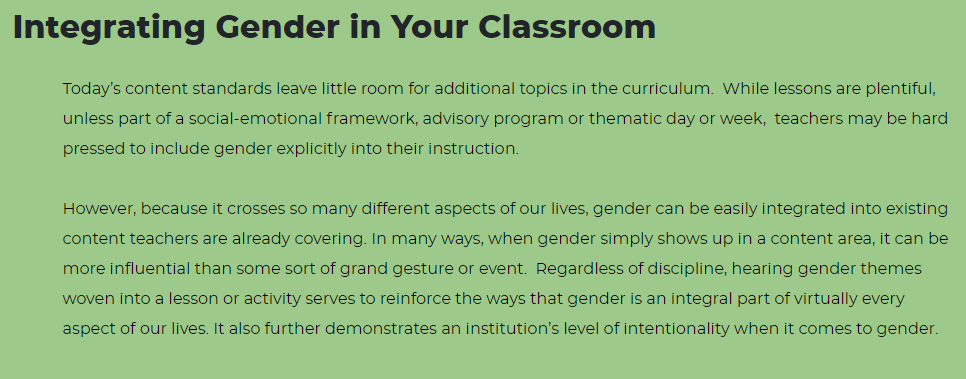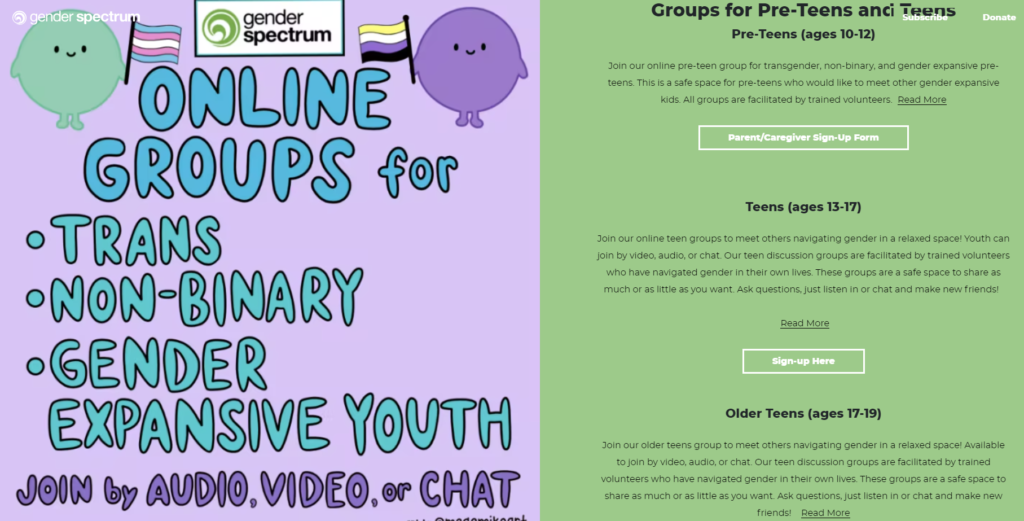
Parents Defending Education receives Gender Support Plan from Poudre School District; district has internal guidelines to keep gender identity of students secret from parents
Incidents
- Issues
- Parent Rights
- Sex and Gender
Parents Defending Education sent a public records request to the Poudre School District for the “Gender Support Plan” used for students who identify as transgender. Poudre School District responded and provided PDE with a “copy of the current Gender Communication Plan for Students, dated March 26, 2017.” The gender support plan asks for a student’s “legal name,” “preferred name,” “assigned sex at birth,” and “current gender identity.”
The plan also explains: “If determined, site level leadership, teachers, parents, and/or all school staff will participate in a meeting to share the student’s journey and gender identity.” The document also gives a potential “preferred response” in the case that “others question the gender identity.” A section of the plan focuses on “substitute teacher’s documents” to “avoid misidentifying a student.” If a student’s preferred pronouns and name are changed, “a counselor may request that the student’s teacher’s re-print the class roster after the change is made to ensure there are updated records.”
The gender support plan includes a section to determine what restrooms and locker rooms a student will use. The plan additionally includes “other considerations” for students who identify as transgender, including “staff training” and teaching students about perceived gender identity. One consideration for students who may disagree with acknowledging a preferred gender identity of another student is to “provide a gentle redirect if students don’t understand gender identity.” The phrase “gender shows up in different ways” is provided as an example of what to tell students. Another consideration is that “there could be a conversation about gender in the classroom and what gender means.”
The plan also encourages students “to report any incidents of bullying/harassment based on gender identity, gender expression, or perceptions thereof.” PDE further asked for records of how many students in the school district were using gender support plans and how many of these students were biological males and biological females. PDE received the response that the “District does not maintain any records responsive to your requests” regarding the number of students with gender support plans.
A concerned community member additionally provided PDE with an internal document from the school district acquired through a public records request. This document is titled “Administrative Guidelines for Addressing Matters that Concern Transgender Students and Providing Appropriate Supports” and is dated June 9, 2016. These guidelines appear to explain that parents do not need to be involved with a child transitioning to another gender. The document explains:
When a student individually, through a parent, or through a relative or another person acting as the student’s advocate expresses concerns or raises questions related to transgender issues, identifies as transgender and/or requests accommodations, the school Principal or Principal’s designee should contact the District’s Director of Student Services (“Director”) or the Director’s designee.
When attempting to understand a student’s “current situation,” the document explains: “It is important to have a good understanding of each student’s individual circumstances in order to develop a support plan that meets their unique needs in accordance with governing law and District policies.” The document appears to also explain that parents can be left out of the process altogether. The document states that the person in charge of the process should work “with school staff in meeting with the student and/or the student’s parents/advocate to develop a support plan for the student and ensure that it is properly implemented.”
The document also lists matters that may need to be addressed with students who are transitioning. One matter on the list is “how to proceed if parents disagree with each other or with the student regarding the support plan.” Another matter on the list is “recognizing and addressing the concerns and religious beliefs of students who are not transgender and/or the parents/advocates of those students.”
The “Administrative Guidelines” are part of a larger internal packet of documents titled “Toolkit for Supporting Transgender and Gender Expansive/Nonconforming Students.” This packet of documents includes an image of the “Gender Unicorn.” The “Gender Unicorn” is an image that schools have used in an attempt to teach children that gender exists on a spectrum. The packet also contains a glossary of words related to transgender issues. In the definition of “transition,” the district appears to support the idea of using puberty blockers and surgery to help children transition. The district states in the packet:
A person can seek congruence in any or all of the following ways: social congruence- through changes of social identifiers such as clothing, hairstyle, gender identity, name and/or pronouns; hormonal congruence- through the use of medicines such as hormone “blockers” or cross hormones to promote gender-based body changes; surgical congruence in which an individual’s body is modified through the addition or removal of gender-related physical traits; and legal congruence through changing identification documents such as one’s birth certificate, driver’s license, and passport.
Another part of the packet explicitly discusses keeping the transitioning process of students a secret from parents. The district explains that “in some cases” for students in secondary school, “notifying parents/guardians carries risks for the student, such as being kicked out of the home.” The district continues to explain:
Prior to notification of any parent/guardian or guardian regarding the transition process, school staff should work closely with the student to assess the degree, if any, the parent/guardian will be involved in the process and must consider the health, well-being and safety of the student in transition.
The packet additionally includes a “sample support plan adopted from the organization Gender Spectrum” that is different from the gender support plan that PDE received. This gender support plan asks: “Are guardian(s) of this student aware and supportive of their child’s gender status?” The plan then asks: “If not, what considerations must be accounted for in implementing this plan?”
PDE previously reported that Laurel Elementary School within the district recently began to facilitate the gender transition of a young student despite the child’s parents telling the school not to do so. In this incident, PDE received emails obtained through a public records request from the district of communications between administrators and staff. District staff explained in the emails that school staff should use the preferred name and pronouns of students, even if parents disagree, and that the gender identity of students should be kept secret from these parents.
Additionally, the organization Gender Spectrum is known for offering resources online specifically targeting “youth” and even teachers. Gender Spectrum offers resources to educators on a page titled “Integrating Gender Diversity Into Everyday Curriculum.” This page explains that the discussion of gender can be integrated into subjects like history, science, mathematics, and even physical education. In targeting the youth, Gender Spectrum offers online chatrooms for children as young as 10 years old who identify as “trans” or “non-binary.”


Stay Informed
